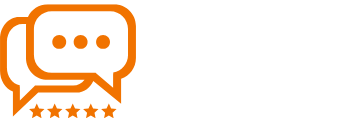Table of Contents
ToggleImagine trying to enjoy a thrilling novel, only to find out it’s written in a language you barely grasp. Frustrating, right? The truth is, without solid language skills, navigating the world of education can be quite the adventure, minus the fun. Understanding basic language and learning skills becomes crucial, especially in a world where communication reigns supreme. In this text, we’ll investigate into what those skills are, why they’re vital, and how to assess them effectively. Buckle up for a comprehensive journey into the realm of language and learning assessments.
Understanding Basic Language Skills

Language skills are the foundation of effective communication in any setting. These skills help not only comprehension but also the ability to express oneself clearly.
Components Of Basic Language Skills
Language skills typically break down into four major components: listening, speaking, reading, and writing. Listening is the first step in communication. One cannot understand spoken language without good listening skills. Speaking allows individuals to share their ideas and emotions.
Reading, on the other hand, opens up the vast world of knowledge, fostering not just comprehension but also critical thinking. Writing consolidates all these elements, enabling individuals to articulate thoughts coherently. Each component plays a significant role in how effectively one can learn and convey information.
Importance Of Language Skills In Learning
The link between language skills and learning is undeniable. Individuals with strong language skills tend to excel in various academic areas because they can grasp concepts more quickly. Besides, effective communication fosters collaboration, an essential aspect of both classroom and life success. Those who can express their thoughts clearly are more likely to participate actively, thereby enriching their learning experiences.
Bottom line? Well-developed language skills pave the way for academic achievements and broader career opportunities.
Methods For Assessing Language Skills
When it comes to assessing language skills, a variety of methods can be employed, each serving its purpose based on the context.
Standardized Testing Approaches
Standardized tests provide a systematic way to measure language skills across large groups. These assessments glide through the essential components of language proficiency, yielding quantifiable results. While they can effectively highlight areas of strength and weakness, critics argue that they often do not capture a student’s full capabilities, especially those who may not perform well under test conditions.
Informal Assessment Techniques
Informal assessments offer a more nuanced approach. Techniques like observations, conversations, and portfolios can reveal a learner’s practical language abilities. For example, a teacher might observe a student during group activities, noting how they communicate within a team. These methods can provide deeper insights into a student’s language skills, emphasizing the importance of context.
Evaluating Learning Skills
Understanding a student’s learning skills is just as crucial as assessing their language abilities. One approach to achieving this is through recognizing various learning styles.
Identifying Learning Styles And Preferences
Each learner has a unique way of absorbing information, be it visual, auditory, or kinesthetic. Recognizing these styles can significantly enhance the effectiveness of language teaching. For example, a visual learner might benefit from diagrams and written materials, whereas an auditory learner may thrive with discussions and storytelling. Educators can employ assessments that cater to these different styles, ensuring that they foster an inclusive, supportive learning environment.
Linking Language Skills To Learning Outcomes
It’s also important to evaluate how language skills impact learning outcomes. Students who excel in language are often more likely to achieve higher academic success. Linking assessment data to learning outcomes can guide educators in adjusting their strategies, ensuring that students receive the support they need to reach their full potential.
Best Practices In Assessment
Creating a robust assessment strategy requires attentiveness to both inclusivity and data usage.
Creating An Inclusive Assessment Environment
An inclusive assessment environment is critical for equitable educational experiences. Flexibility in assessment methods allows for diverse student needs to be met, ensuring everyone has a fair chance to demonstrate their skills. Reviewing the strategies used to engage students from varied backgrounds, such as incorporating culturally relevant materials, can foster a more inclusive atmosphere that encourages participation.
Utilizing Assessment Data For Improvement
Once collected, assessment data should not be left untouched. Utilizing this information for continuous improvement is vital. Educators can analyze results, identify trends, and tailor their instruction based on what the data reveals. Whether it’s through targeted interventions or personalized lesson plans, a data-driven approach creates a responsive educational environment where language and learning skills can flourish.







